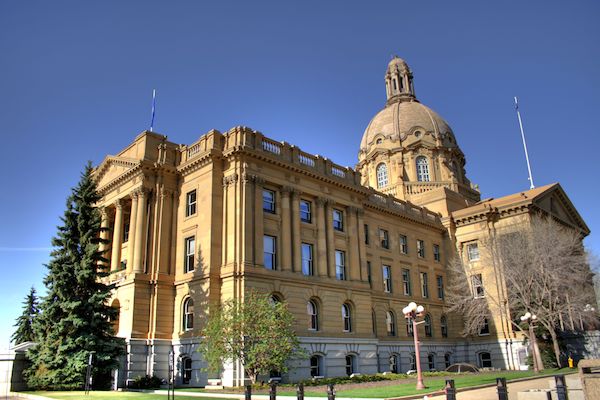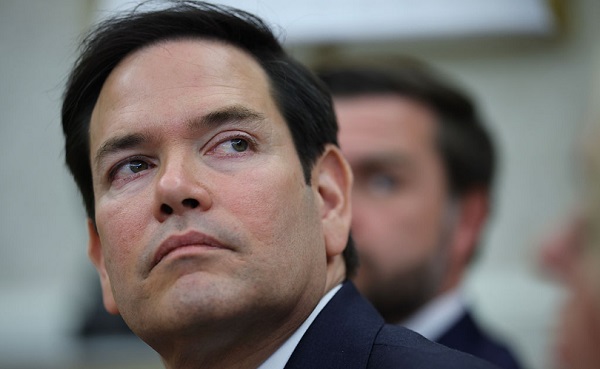Alberta
Alberta’s projected surplus balloons: Mid-year budget update

Mid-year update: Keeping Alberta’s finances on track
Alberta’s government continues to manage the province’s finances responsibly with the future in mind.
Alberta continues to lead the nation in economic growth and is forecasting a surplus of $5.5 billion in 2023-24, an increase of $3.2 billion from Budget 2023. The province’s fiscal outlook continued to improve in the second quarter of 2023-24, boosted by strong bitumen royalties and higher income tax revenues.
However, volatile oil prices, continued inflation challenges and uncertainty due to slowing global growth could still affect the province’s finances going forward. Debt servicing costs will be higher than previous years due to higher interest rates, reinforcing the importance of the government’s commitment to balance the budget.
“Alberta continues to stand out as a leader when it comes to fiscal stability and economic resilience in the midst of so much global uncertainty. Our second-quarter fiscal update is another positive report, showing strength in Alberta’s finances and economy and positioning us for future growth and prosperity.”
The government continues to spend responsibly, maintaining its commitment to keep funds in the province’s contingency for disasters and emergencies. The government’s new fiscal framework requires the government to use at least half of available surplus cash to pay down debt, freeing up money that can support the needs of Albertans for generations. The government continues to reduce the province’s debt burden and will pay down a forecasted $3.2 billion in debt this fiscal year.
Alberta’s government is turning its focus to developing next year’s budget, so it supports Albertans’ needs and the province’s economic growth while maintaining the government’s commitment to responsible spending within the fiscal framework. Budget 2024 consultations are open and Albertans are encouraged to share their feedback to help set the province’s financial priorities.
Revenue
- Revenue for 2023-24 is forecast at $74.3 billion, a $3.7-billion increase from Budget 2023. The increase is due to increases across different revenue streams. In addition, the price of West Texas Intermediate (WTI) oil is forecast to average US$79 per barrel over the course of the fiscal year, in line with the Budget 2023 forecast.
- Personal and corporate income tax revenue is forecast at $21.8 billion, $1.8 billion higher than at budget.
- Bitumen royalties are forecast at $14.4 billion, an increase of $1.8 billion from budget.
- Overall resource revenue is forecast at $19.7 billion, $1.3 billion higher than the budget forecast.
- Beginning in 2024, Alberta’s government will continue to offer fuel tax relief when oil prices are high, even as the province transitions back to the original fuel tax relief program, which is based on average quarterly oil prices.
- Albertans will save some or all of the provincial fuel tax on gasoline and diesel when oil prices are $80 per barrel or higher during each quarter’s review period.
- Although oil prices have been below $80 in recent weeks, Albertans will continue to save at least four cents per litre on the provincial fuel tax in the first three months of 2024 as the tax is phased back in.
- The government’s fuel tax relief efforts, which include the pause to the end of 2023 and additional savings over the first three months of 2024, are forecast to reduce other tax revenue by $524 million in 2023-24.
Expense
- Expense for 2023-24 is forecast at $68.8 billion, a $481-million increase from Budget 2023.
- Capital grants are up marginally from Budget 2023, but down from the first-quarter forecast, mainly due to funding schedules for Calgary and Edmonton LRT projects.
- Debt servicing costs are forecast to increase $309 million from budget, a reflection of ongoing high interest rates and inflation.
- Total expense has increased by $1.9 billion, $0.5 billion is directly offset by revenue and $1.4 billion is absorbed by the $1.5-billion contingency.
- In total, $123 million of the 2023-24 contingency remains unallocated.
- $1.2 billion in disaster and emergency costs are forecast for the current fiscal year.
- $750 million for fighting wildfires in the province
- $165 million for AgriRecovery to support livestock producers affected by dry conditions
- $253 million to provide financial assistance to communities for uninsurable damage from spring wildfires and summer flooding
- $61 million for evacuation and other support
- The operating expense forecast has increased by $319 million, including an additional:
- $301 million for Health
- $48 million for Advanced Education
- $48 million for Energy and Minerals
- $33 million for Mental Health and Addiction
- $30 million for Education
- $14 million for Indigenous Relations
- Offset by decreases of $187 million for lower-than-expected program take-up of affordability payments and re-profiling of TIER spending to 2024-25.
Alberta Heritage Savings Trust Fund
- The Alberta Heritage Savings Trust Fund’s market value on Sept. 30, 2023, was $21.4 billion, up from the $21.2 billion reported at March 31, 2023.
- The Heritage Fund returned 0.9 per cent over the first six months of 2023-24.
- Over the five-year period ending on Sept. 30, 2023, the Heritage Fund returned 5.9 per cent, which is 0.5 per cent above the return of its passive benchmark. While the Heritage Fund is outperforming its benchmark return, it is below the long-term real return target of 6.9 per cent, again a result of interest pressures.
- The Heritage Fund generated net investment income of $1 billion in the first half of the fiscal year.
Economic outlook
- Alberta’s economy continues to be resilient, with continued growth projected over the three-year forecast.
- Alberta’s real gross domestic product (GDP) is expected to grow 2.8 per cent in 2023, in line with the Budget 2023 forecast.
- Despite interest rate increases, high prices and slower global economic growth, Alberta’s economy is forecast to keep expanding. The pace of growth, however, will be slower compared with the last two years when the province was recovering from the pandemic.
Alberta Fund
- The amount of surplus cash available for debt repayment and the Alberta Fund is determined after a number of required cash adjustments have been made. For 2023-24, this includes $5.1 billion from the 2022-23 final results to start the year.
- The Alberta Fund contribution for 2023-24 is forecast at $1.6 billion.
- Money in the Alberta Fund can be used toward additional debt repayment, the Heritage Savings Trust Fund, or one-time initiatives that do not permanently increase government spending.
Related information
Alberta
Low oil prices could have big consequences for Alberta’s finances

From the Fraser Institute
By Tegan Hill
Amid the tariff war, the price of West Texas Intermediate oil—a common benchmark—recently dropped below US$60 per barrel. Given every $1 drop in oil prices is an estimated $750 million hit to provincial revenues, if oil prices remain low for long, there could be big implications for Alberta’s budget.
The Smith government already projects a $5.2 billion budget deficit in 2025/26 with continued deficits over the following two years. This year’s deficit is based on oil prices averaging US$68.00 per barrel. While the budget does include a $4 billion “contingency” for unforeseen events, given the economic and fiscal impact of Trump’s tariffs, it could quickly be eaten up.
Budget deficits come with costs for Albertans, who will already pay a projected $600 each in provincial government debt interest in 2025/26. That’s money that could have gone towards health care and education, or even tax relief.
Unfortunately, this is all part of the resource revenue rollercoaster that’s are all too familiar to Albertans.
Resource revenue (including oil and gas royalties) is inherently volatile. In the last 10 years alone, it has been as high as $25.2 billion in 2022/23 and as low as $2.8 billion in 2015/16. The provincial government typically enjoys budget surpluses—and increases government spending—when oil prices and resource revenue is relatively high, but is thrown into deficits when resource revenues inevitably fall.
Fortunately, the Smith government can mitigate this volatility.
The key is limiting the level of resource revenue included in the budget to a set stable amount. Any resource revenue above that stable amount is automatically saved in a rainy-day fund to be withdrawn to maintain that stable amount in the budget during years of relatively low resource revenue. The logic is simple: save during the good times so you can weather the storm during bad times.
Indeed, if the Smith government had created a rainy-day account in 2023, for example, it could have already built up a sizeable fund to help stabilize the budget when resource revenue declines. While the Smith government has deposited some money in the Heritage Fund in recent years, it has not created a dedicated rainy-day account or introduced a similar mechanism to help stabilize provincial finances.
Limiting the amount of resource revenue in the budget, particularly during times of relatively high resource revenue, also tempers demand for higher spending, which is only fiscally sustainable with permanently high resource revenues. In other words, if the government creates a rainy-day account, spending would become more closely align with stable ongoing levels of revenue.
And it’s not too late. To end the boom-bust cycle and finally help stabilize provincial finances, the Smith government should create a rainy-day account.
Alberta
Governments in Alberta should spur homebuilding amid population explosion

From the Fraser Institute
By Tegan Hill and Austin Thompson
In 2024, construction started on 47,827 housing units—the most since 48,336 units in 2007 when population growth was less than half of what it was in 2024.
Alberta has long been viewed as an oasis in Canada’s overheated housing market—a refuge for Canadians priced out of high-cost centres such as Vancouver and Toronto. But the oasis is starting to dry up. House prices and rents in the province have spiked by about one-third since the start of the pandemic. According to a recent Maru poll, more than 70 per cent of Calgarians and Edmontonians doubt they will ever be able to afford a home in their city. Which raises the question: how much longer can this go on?
Alberta’s housing affordability problem reflects a simple reality—not enough homes have been built to accommodate the province’s growing population. The result? More Albertans competing for the same homes and rental units, pushing prices higher.
Population growth has always been volatile in Alberta, but the recent surge, fuelled by record levels of immigration, is unprecedented. Alberta has set new population growth records every year since 2022, culminating in the largest-ever increase of 186,704 new residents in 2024—nearly 70 per cent more than the largest pre-pandemic increase in 2013.
Homebuilding has increased, but not enough to keep pace with the rise in population. In 2024, construction started on 47,827 housing units—the most since 48,336 units in 2007 when population growth was less than half of what it was in 2024.
Moreover, from 1972 to 2019, Alberta added 2.1 new residents (on average) for every housing unit started compared to 3.9 new residents for every housing unit started in 2024. Put differently, today nearly twice as many new residents are potentially competing for each new home compared to historical norms.
While Alberta attracts more Canadians from other provinces than any other province, federal immigration and residency policies drive Alberta’s population growth. So while the provincial government has little control over its population growth, provincial and municipal governments can affect the pace of homebuilding.
For example, recent provincial amendments to the city charters in Calgary and Edmonton have helped standardize building codes, which should minimize cost and complexity for builders who operate across different jurisdictions. Municipal zoning reforms in Calgary, Edmonton and Red Deer have made it easier to build higher-density housing, and Lethbridge and Medicine Hat may soon follow suit. These changes should make it easier and faster to build homes, helping Alberta maintain some of the least restrictive building rules and quickest approval timelines in Canada.
There is, however, room for improvement. Policymakers at both the provincial and municipal level should streamline rules for building, reduce regulatory uncertainty and development costs, and shorten timelines for permit approvals. Calgary, for instance, imposes fees on developers to fund a wide array of public infrastructure—including roads, sewers, libraries, even buses—while Edmonton currently only imposes fees to fund the construction of new firehalls.
It’s difficult to say how long Alberta’s housing affordability woes will endure, but the situation is unlikely to improve unless homebuilding increases, spurred by government policies that facilitate more development.
-

 2025 Federal Election2 days ago
2025 Federal Election2 days agoPolls say Canadians will give Trump what he wants, a Carney victory.
-

 2025 Federal Election2 days ago
2025 Federal Election2 days agoThe Anhui Convergence: Chinese United Front Network Surfaces in Australian and Canadian Elections
-

 2025 Federal Election2 days ago
2025 Federal Election2 days agoTrump Has Driven Canadians Crazy. This Is How Crazy.
-

 2025 Federal Election2 days ago
2025 Federal Election2 days agoCarney Liberals pledge to follow ‘gender-based goals analysis’ in all government policy
-

 2025 Federal Election2 days ago
2025 Federal Election2 days agoPoilievre’s Conservatives promise to repeal policy allowing male criminals in female jails
-

 conflict2 days ago
conflict2 days agoTrump tells Zelensky: Accept peace or risk ‘losing the whole country’
-

 2025 Federal Election1 day ago
2025 Federal Election1 day agoPoilievre Campaigning To Build A Canadian Economic Fortress
-

 Automotive1 day ago
Automotive1 day agoCanadians’ Interest in Buying an EV Falls for Third Year in a Row








